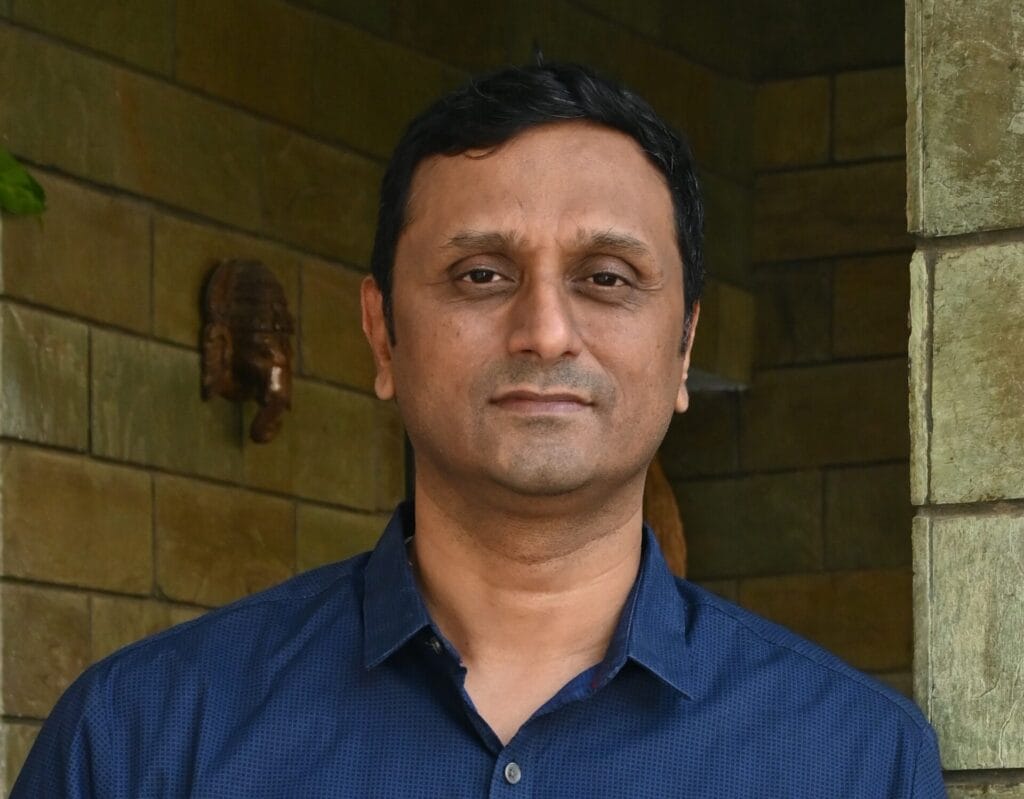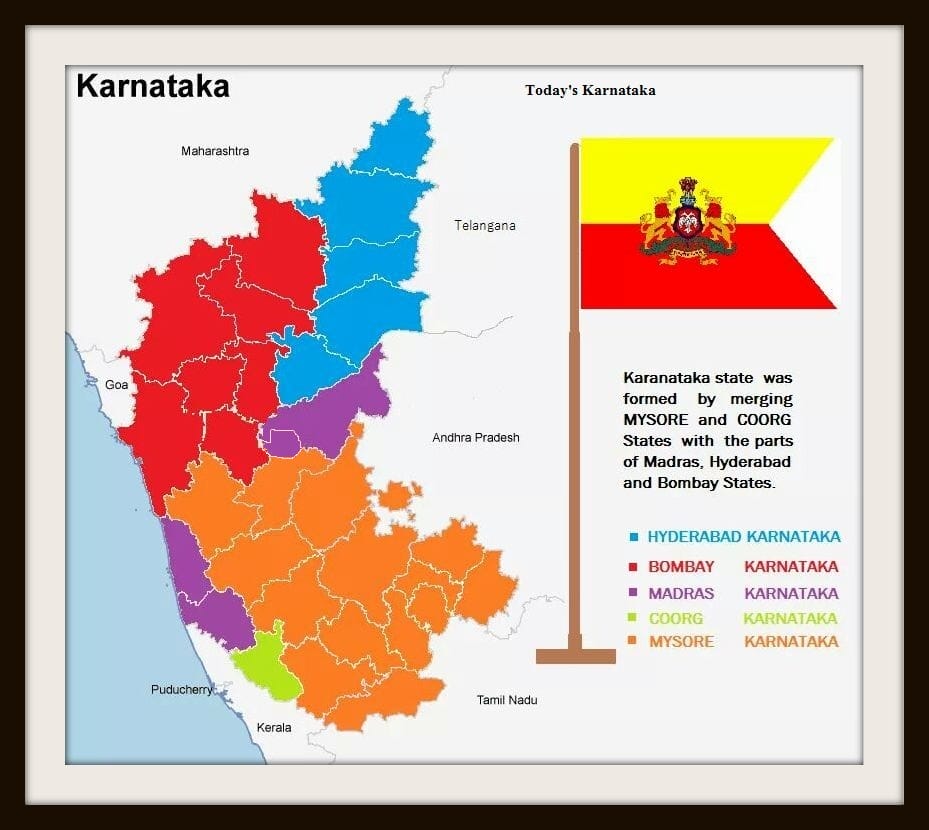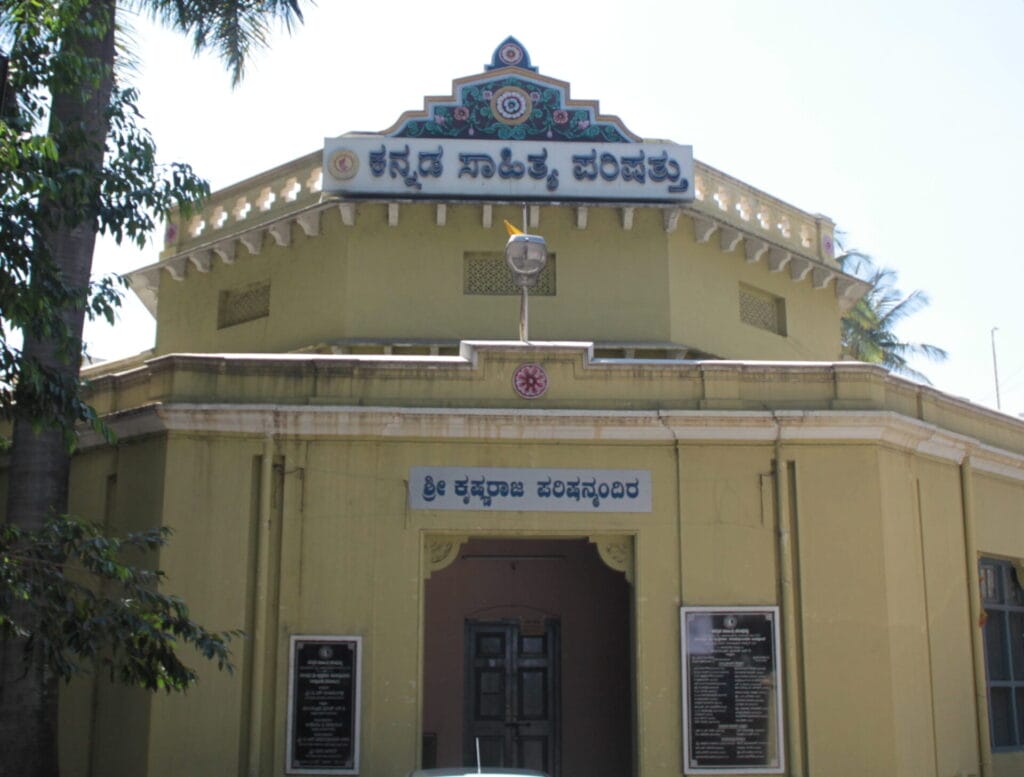[Part one of this series explained the history of the Kannada signage issue]
The protests by Kannada groups, led by the Kannada Rakshana Vedike last month, demanding that Kannada signage rules be implemented has sparked a debate in Bengaluru. Kannada groups point out that as Bengaluru is the capital of Karnataka, important communication in the city, including information on shops and businesses, must be done in Kannada.
Imagine, they say, a Kannadiga coming from any other part of the state and feeling lost in a sea of English signs in Bengaluru. At the same time, the attacks on businesses and storefronts have sparked criticism among many Bangaloreans, both Kannadigas and non-Kannadigas.
Read more: Kannada signage rules in Bengaluru: A history
At the heart of this struggle is a fear that in Bengaluru, the cosmopolitan capital of Karnataka, Kannada is being replaced by English and Hindi. Over seventy years after the formation of the state, why does the Kannada struggle continue in Bengaluru? Why does the language not automatically have prominence in the city?

In part two of this series, we speak to sociologist, Dr Chandan Gowda. He has studied the Kannada movement extensively for several years and outlines how it has evolved over the years.
Chandan is the Ramakrishna Hegde Chair Professor of Decentralization and Development at the Institute for Social and Economic Change. He is also the author of Another India: Events, Memories, People .
How the Kannada movement was different from the Tamil movement
Chandan: One big difference: The Tamil language mobilisation happened alongside the Dravidian mobilisation. This is the idea that Tamilians were a Dravidian culture and a separate civilization. It is tied up with the self-respect movement. It was linked with the Freedom Movement. Tamil nationalism was also very strongly articulated. Bangalore was part of Mysore State, where there was no strong freedom movement. So, the pro-Kannada movement wasn’t part of that kind of mobilisation.
The Kannada speaking areas were distributed across Mysore state, the Nizam’s Hyderabad, the Bombay presidency, and the Madras Presidency. Outside of Mysore and Mangalore, which was part of Madras Presidency, languages other than Kannada held primacy. For example, it had a secondary status in relation to Marathi in the courts of Dharwad.

Kannada speakers felt they are not being treated as equal. Memories of being slighted on linguistic grounds and an awareness that the region of Kannada needed to be unified came from Alur Venkat Rao in the early 1900s, with the Jaya Karnataka newspaper and the Karnataka Gatha Vaibhava, a consolidated history of the region.
Alur Venkat Rao was a historian and writer who is considered the Karnataka Kulapurohita or the high priest of Karnataka. He was born in the Bijapur in the Bombay presidency. In 1922, he started a magazine called Jaya Karnataka, which stood for the unification of Kannada speaking regions into one state.
The unification of the Kannada regions
Chandan: The movement for Kannada unification played itself out as a fairly low intensity campaign. The new histories of literary production and Kannada inscriptions in the 19th century played a key part in visualising the geographic spread of the Kannada region. Various organisations, including the Karnataka Vidyavardhaka Sangha in the Bombay Presidency, worked to promote the Kannada activist cause.
The Mysore government founded the Kannada Sahitya Parishat in Bengaluru. The Sahitya Parishad organised regular meetings across the Kannada speaking parts where noted Kannada writers and journalists participated.

Bangalore had the Sahitya Parishad, Kannada academics and journalists and housed newspapers, had its “own scene” as they say. However, it was the administrative capital of Mysore State and had a small British-led army presence. So, there was a strong Anglo presence in the Cantonment areas, which had a sizable number of Urdu and Tamil speakers as well. The older parts of Bangalore, including trading areas like Chickpet, Akkipet, Cottonpet and residential areas like Malleshwaram, Chamrajpet and Basavangudi were predominantly Kannada speaking. This is of course a familiar history.
After India became independent, people began thinking more about the political status of their language in relation to the country, even though the states were not linguistically organised at that time. And the linguistic reorganisation of states in 1956 brought a coherence to the one major language-one state logic.
In 1956, the Union Government passed the States Reorganisation Act, 1956, under which several regions were reorganised into states on a linguistic basis. This is when the Mysore state was formed and many of the previously mentioned Kannada regions were added to this state. The new Mysore State came into being on November 1, 1956. The state was renamed Karnataka only on November 1, 1973.
Migrants and Kannada
Chandan: Indeed, many of them were perfectly bilingual and saw themselves as Kannadigas. But the pro-Kannada activists felt that Kannada ought to have linguistic primacy in Bangalore, the capital city of the newly reorganised Karnataka. Kannada was, of course, the official language of the state, but linguistic primacy for the activists meant that Kannada ought to be respected in the state.
They were irked that the Tamil speakers in Bangalore were not respecting Kannada. Now, the Tamil speakers they are referring to here are newer migrants who had moved into the city in the 1960s-70s in search of jobs post the DMK mobilisation in Tamil Nadu.
I have spoken to Kannada activists from that time and they shared the same set of examples. “If you went to Majestic or Kempe Gowda Road, all the movie theatres only showed Tamil films and they hoisted the DMK flags.” Majestic was important because of the railway station. It was the gateway to the city. “They were being so arrogant and assertive. Can you imagine us doing any of this there [TN]?”
And these Kannada activists did not think this should pass. They started doing a variety of things like giving speeches, in Cantonment, Fraser Town and Cox Town, saying that Kannada had primary status here. Occasionally, things took a violent turn, like the burning down of a small theatre that showed Tamil films. But the Kannada intelligentsia were not particularly enthusiastic about this sort of politics. They cared more about the survival of the Kannada language.
Aa Na Krishnaraya, a Kannada writer, along with others, mobilised street-wise for a Kannada movement. He and his fellow-activists came up with a deity for Kannada, that is, Goddess Bhuvaneshwari, and embraced the Kannada flag to mobilise people in support of their cause. Through this period [1960s] the chief linguistic enemy was Tamil and the Tamil migrants of that time. Kannada activists disrupted the week-long music festival during Ram Navami because all the singers were Tamilian.
Meanwhile, no political party of the time, [Congress was the dominant one] identified with their activities. The activists resented this indifference of the political class. Until very recently, political parties have never espoused the Kannada cause the way the activists wanted. The former only made stray gestures all through.
For instance, the newly unified state came into being on November 1, 1956. From then on, activists constantly demanded that November 1st be declared a holiday, but the state government couldn’t care less until the early 1970s. This is largely because the Kannada cause was not electorally significant. The activism to secure the linguistic identity of Kannada [in independent India] was largely restricted to Bangalore.
The most significant agitations of the Kannada movement
Chandan: The Gokak chaluvali was the first big mass mobilisation for the Kannada cause in the 1980s. It was a statewide mobilisation, but Bangalore was important. It culminated in the formation of the Kannada Kavalu Samithi [later became the Kannada Development Authority] to monitor the progress of Kannada and other recommendations like the reservation of jobs for Kannadigas (which was defined by domicile and not by the “mother tongue”) etc. But none of these things have seen proper implementation. The promotion of Kannada is rarely part of the manifestos of political parties.
The Gokak agitation was an agitation for Kannada to be the first language of the state. In 1968, the Central government promoted a three language formula for education under which all Hindi speaking states were to introduce Hindi, English and a modern Indian language (preferably one of the southern languages) and non-Hindi speaking states were to teach Hindi, English and the regional language. Most other states did not adopt this policy, but Karnataka did.
During this period, because there was opposition to Hindi, Sanskrit was the first language in education while the state language Kannada was made the third language. In 1972, CM Devaraj Urs made Kannada the first language and Sanskrit the third.
But in 1980, his successor D. Gundu Rao, reverted Sanskrit back to the first language status, sparking protests. The state government set up a committee under scholar Vinayaka Krishna Gokak to look into the demands. The Gokak committee recommended that Kannada be the first or second language during high school and the medium of instruction in public and private primary schools.
The recommendations were initially not implemented leading to the Gokak agitation in 1982. The agitation became hugely popular after Kannada actor Dr Rajkumar joined the movement. After this, the government passed an order to the effect. This rule has, however, been challenged and struck down by the courts, which said parents should have the right to decide on the medium. The Karnataka government passed another order in 1994 stating that schools had to provide education in the Kannada medium or a mother tongue. This was also challenged by private schools and struck down by the courts. But CM Siddaramaiah continues to say that the government will try to make this happen.
But, in the 1990s, the Kannada movement turned violent on two occasions. One pertained to the Cauvery water sharing issue during Bangarappa’s time when many Tamilians were attacked. Nearly twenty persons died and several business properties were destroyed with the state government staying passive.
The other time was when Bangalore Doordarshan introduced a separate Urdu telecast ten minutes after the Kannada broadcast. Liberal intellectuals like Girish Karnad objected to it saying that this projected a wrong idea that Muslims in Karnataka didn’t understand or speak Kannada.
During this period, there was an attempt to communalise the Kannada movement, giving it an anti-Muslim colour, but mercifully it didn’t endure. Around 25 people in Muslim-dominated neighbourhoods were killed during this violent episode.
Read more: Communal riots aren’t new to Bengaluru. Here’s what a history of riots says about the city
Over the years, other grievances have evolved but the essence remains the same: The sense that Kannada does not enjoy linguistic respect and prestige in Bangalore. In recent years, Tamilians no longer appear as its key language rivals.
It is now the “North Indians” (which could include people who don’t think of themselves as North Indians, like Bengalis), anybody speaking in Hindi and expressing indifference to learning the local language. The sense that people come in and don’t pick up the language appears a legitimate moral problem only within the ethical framework of a federal polity – where speakers of one state ought to pick up the language of another state when they move there. Public conversations on this aspect of the issue need to emerge.
A chief moral defence of the demand for Kannada language signs in Bangalore is that visitors to the capital city from different parts of the state should not feel alienated. They should be able to understand what the shops sell, what the road signs say. How symbolic concerns like these relate to the issue of the survival of Kannada language and culture merits a separate discussion.
(Part three will delve into the efforts made by the state government and the Kannada development authority to promote Kannada)
Well written, but for a few errors like court has stuck down the law to make Kannada, a compulsory medium of instruction and not teaching Kannada as a subject(1st or 2nd language).
Author has used spelling as Bangalore, instead of BENGALURU, the official name since Nov 2014.
Thank you for reading the article. Just want to point out that in the final box we have mentioned that the court has struck down the Kannada medium rule. Also this is an interview with a sociologist. He has used Bangalore rather than Bengaluru. As it is an interview, we have to publish his words verbatim. Citizen Matters as a rule uses Bengaluru.